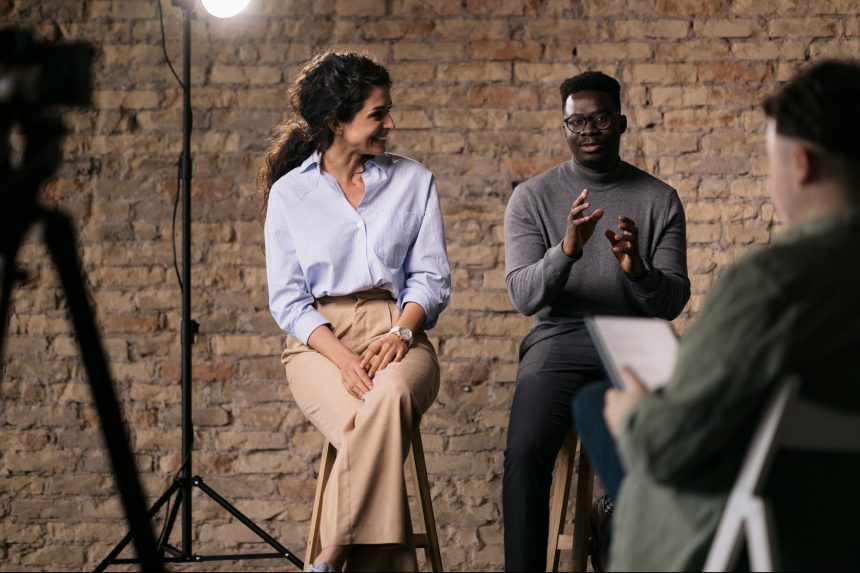When it comes to speaking with the press, don’t make “winging it” your strategy. Even if you know your subject matter inside and out — or you’re known for your ability to speak eloquently — preparation is key for entrepreneurs or high-level executives.
In my experience, the more media experience someone has, the more they practice. I’ve seen regular TODAY show guests running through talking points repeatedly in the green room, and seasoned sources for The New York Times consult their press team for pointers.
Preparing doesn’t mean you’re not a natural with the press. In fact, it’s quite the opposite: It shows that you understand journalists are looking for key things to provide their audience with value — and that you’re willing to cater to that.
Only have five minutes? Here’s media training in a nutshell.
1. Prepare concise messaging ahead of time
When it comes to interviews, more is not more. Journalists only have so much space or air time to get to the core of your story — and they appreciate sources who can be clear, concise and impactful with fewer words.
Think about your messaging beforehand: What is the clearest, quickest way to get to the point? Clear messaging avoids jargon or complicated industry-specific terms. Give the journalist the concise version of your messaging first (this should typically take no more than 10-15 seconds), then follow up with details if they ask for more.
Journalists already have questions prepared for you, so avoid monologuing. Many sources have used their entire interview time on the first question, which can be frustrating for the reporter — and less serviceable for the audience.
If you can answer a journalist’s questions directly and clearly, you’ll increase your chances of being featured again.
Related: 5 Things Journalists Wish You Knew About Getting Press Coverage for Your Company
2. Do phone interviews right
Make sure you’re available and in a quiet place when the phone rings. Journalists know sources are busy and sometimes need to take interviews on the go, but it’s much more difficult for them to accurately transcribe your quotes if you’re speaking on a busy sidewalk versus an office. A quiet space helps to ensure accuracy.
Speak slowly and clearly. The journalist is either transcribing your interview in real-time or recording the conversation to transcribe later, so speaking slowly will make it easier for them to pull your quotes.
If you’re being interviewed by phone for a radio show, you may find it tempting to have detailed notes in front of you. However, this can make your responses feel stiff and scripted, which doesn’t translate well for radio. It can also leave you scrambling for your notes on a given topic when asked about it, leading to unnatural pauses in your dialogue.
Instead, jot down a few bullet points with your main talking points — they shouldn’t exceed one index card! — and keep it in front of you as a gentle reminder, if needed.
3. Cater to the camera
When it comes to broadcast, a straight face looks like a frown on camera, so smile if it fits the tone. Also, raise the pitch of your voice ever so slightly to avoid vocal fry, which is more noticeable and distracting on camera.
As with a phone interview, speak slowly. This will help you sound more confident and will also relax you. If you tend to forget to breathe during higher-stress situations like live broadcasts, practice your talking points with designated breaks for catching a breath. By doing so, you’ll naturally slow down and sound more at ease on camera.
Feel free to use your hands when speaking, but be mindful not to overuse gestures that may be distracting. Avoid holding your hands in front of your body, which can make you look timid. Finally, never turn away from the camera, even when you’re speaking to the host.
Related: Three Mistakes To Avoid When You’re On Camera
4. Know which topics are off-limits
Do what you can ahead of the interview to alert the journalist of any off-limit topics. Chances are, they’ll be just as eager to avoid an awkward situation as you are — especially if you’re interviewing for lifestyle content rather than hard-hitting news.
However, if they’re pressing for information on a certain off-limit topic, a few phrases you can prepare ahead of time are:
- “I’m not able to answer that question until I have more information. But here’s what I can tell you…”
- “I understand that’s a concern, but I believe the true root of the issue is this, and here’s why…”
- “That’s not my area of expertise, as much as I’d love to help you. However, from my own experience, here’s what I can share…”
And while you can say “off the record,” and a journalist should not publicize that information, it’s generally best to avoid off-the-record remarks unless they’re truly important for the story’s context. It’s too easy for the lines between “on the record” and “off the record” to accidentally get blurred during an interview.
Related: Answering Difficult Questions: The How-To
5. Practice improvisation for live moments
Without a doubt, a situation or question will come up that you didn’t prepare for. Perhaps you’re giving a baking demo, and the egg doesn’t crack quite right. Or maybe you stumble over your words and say something unintelligible.
Beyond doing the best you can to prepare for any situation, also be prepared to laugh at yourself (or simply address the blunder quickly) and move on right away. Your audience will only stumble over that moment as much as you do — and air time is precious.
In today’s world, authenticity is valued more than perfection. Your viewers aren’t looking for a flawless, scripted segment. They’re looking for another person to learn from, relate to, and connect with. That’s what will form a genuine connection and loyal following for your brand.
Read the full article here










